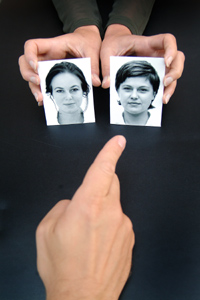|
From rxpgnews.com Cognitive Science
Researchers showed picture-pairs of female faces to the participants and asked them to choose which face in each pair they found most attractive. In addition, immediately after their choice, they were asked to verbally describe the reasons for choosing the way they did. Unknown to the participants, on certain trials, a card magic trick was used to secretly exchange one face for the other. Thus, on these trials, the outcome of the choice became the opposite of what they intended.
However, using a variety of measures, the researchers found that the two types of reports were remarkably similar. ''When asked to motivate their choices, the participants delivered their verbal reports with the same confidence, and with the same level of detail and emotionality for the faces that that were not chosen, as for the ones that were actually chosen'' Johansson said. Despite the intimate familiarity we have with everyday decision making, it is very difficult to determine what we can know about this process from the 'inside', by reflection and introspection. A great barrier for scientific research in this domain is the nature of subjectivity. How can researchers ever verify the reports of the participants involved, when they have no means of challenging them? But by using choice blindness as an instrument, the researchers were able to 'get between' the decisions of the participants and the outcomes they were presented with. "Our experiment introduces an entirely novel methodology that can be used to investigate choice and introspection'' Hall said. ''This may lead to an improved understanding of the processes behind both truthful and confabulatory reports'' All rights reserved by www.rxpgnews.com |
